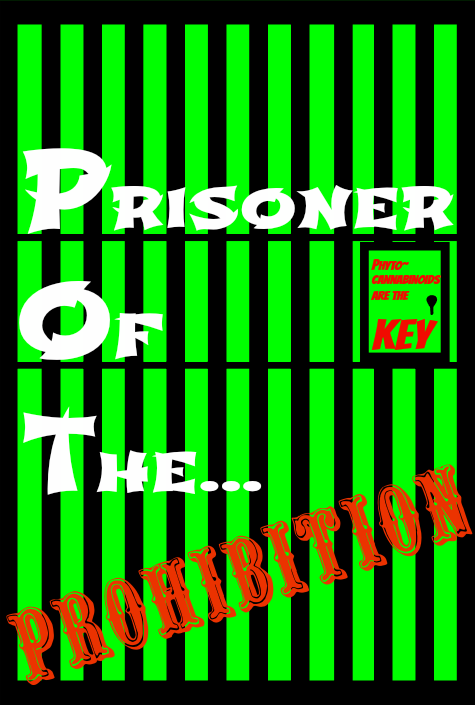[Epub ahead of print]
 Cardioprotective effect of cannabidiol in rats exposed to doxorubicin toxicity.
Cardioprotective effect of cannabidiol in rats exposed to doxorubicin toxicity.
Source
Department of Biomedical Sciences, Pharmacology Division, College of Medicine, King Faisal University, Al-Ahsa, Saudi Arabia. Electronic address: amrfouad65@yahoo.com.
Abstract
The potential protective effect of cannabidiol, the major non-psychotropic Cannabis constituent, was investigated against doxorubicin cardiotoxicity in rats. Cardiotoxicity was induced by six equal doses of doxorubicin (2.5mgkg-1i.p., each) given at 48h intervals over two weeks to achieve a total dose of 15mgkg-1. Cannabidiol treatment (5mgkg-1/day, i.p.) was started on the same day of doxorubicin administration and continued for four weeks.Cannabidiol significantly reduced the elevations of serum creatine kinase-MB and troponin T, and cardiac malondialdehyde, tumor necrosis factor-α, nitric oxide and calcium ion levels, and attenuated the decreases in cardiac reduced glutathione, selenium and zinc ions. Histopathological examination showed that cannabidiol ameliorated doxorubicin-induced cardiac injury. Immunohistochemical analysis revealed that cannabidiol significantly reduced the expression of inducible nitric oxide synthase, nuclear factor-κB, Fas ligand and caspase-3, and increased the expression of survivin in cardiac tissue of doxorubicin-treated rats. These results indicate that cannabidiol represents a potential protective agent against doxorubicin cardiac injury.
Copyright © 2013 Elsevier B.V. All rights reserved.
Copyright © 2013 Elsevier B.V. All rights reserved.
- PMID:
23721741
[PubMed – as supplied by publisher]

Figures and tables from this article:
- Fig. 1. Photomicrographs of rat heart (H&E) from: (A, 200×) control group showing normal architecture of cardiac tissue; (B, 200× and C, 400×) doxorubicin group without cannabidiol treatment showing widespread damage in the form of cytoplasmic vacuolization, loss of muscle fibers, edema, hemorrhages (B, black arrow) and coagulative necrosis (C, white arrow); (D, 200×) doxorubicin plus cannabidiol group showing a histological picture comparable to that of the control group.
- Fig. 2. Immunohistochemical staining of inducible nitric oxide synthase (iNOS) in rat heart (200×) from: (A) control group showing no expression of iNOS; (B) doxorubicin group without cannabidiol treatment showing a significant increase in iNOS immunoreactivity in the cardiomyocytes (white arrows); (C) doxorubicin plus cannabidiol group showing a significant reduction in iNOS immunostaining. Brown color indicates iNOS positivity; (D) percentage expression of iNOS, data is mean ± S.E.M. of 8 rats, ND = non-detectable, *p < 0.05 vs. control group, •p < 0.05 vs. doxorubicin (DOX) group without cannabidiol (CBD) treatment. (For interpretation of the references to color in this figure legend, the reader is referred to the web version of the article.)
- Fig. 3. Immunohistochemical staining of nuclear factor-κB (NF-κB) in rat heart (200×) from: (A) control group showing no expression of NF-κB; (B) doxorubicin group without cannabidiol treatment showing a significant increase in NF-κB immunoreactivity in the cardiomyocytes (white arrows); (C) doxorubicin plus cannabidiol group demonstrating a significant reduction in NF-κB immunostaining. Brown color indicates NF-κB positivity; (D) percentage expression of NF-κB, data is mean ± S.E.M. of 8 rats, ND = non-detectable, *p < 0.05 vs. control group, •p < 0.05 vs. doxorubicin (DOX) group without cannabidiol (CBD) treatment. (For interpretation of the references to color in this figure legend, the reader is referred to the web version of the article.)
- Fig. 4. Immunohistochemical staining of Fas ligand (FasL) in rat heart (200×) from: (A) control group showing no expression of FasL; (B) doxorubicin group without cannabidiol treatment showing a significant increase in FasL immunoreactivity in the cardiomyocytes (white arrows); (C) doxorubicin plus cannabidiol group demonstrating a significant reduction in FasL immunostaining. Brown color indicates FasL positivity; (D) percentage expression of FasL, data is mean ± S.E.M. of 8 rats, ND = non-detectable, *p < 0.05 vs. control group, •p < 0.05 vs. doxorubicin (DOX) group without cannabidiol (CBD) treatment. (For interpretation of the references to color in this figure legend, the reader is referred to the web version of the article.)
- Fig. 5. Immunohistochemical staining of survivin in rat heart (200×) from: (A) control group showing that survivin is expressed in normal cardiomyocytes (white arrows); (B) doxorubicin group without cannabidiol treatment showing a significant reduction in survivin immunoreactivity in the cardiomyocytes; (C) doxorubicin plus cannabidiol group showing a significant increase in survivin immunostaining. Brown color indicates survivin positivity; (D) percentage expression of survivin, data is mean ± S.E.M. of 8 rats, ND = non-detectable, *p < 0.05 vs. control group, •p < 0.05 vs. doxorubicin (DOX) group without cannabidiol (CBD) treatment. (For interpretation of the references to color in this figure legend, the reader is referred to the web version of the article.)
- Fig. 6. Immunohistochemical staining of caspase-3 in rat heart (200×) from: (A) control group showing no expression of caspase-3; (B) doxorubicin group without cannabidiol treatment showing a significant increase in caspase-3 immunoreactivity in the cardiomyocytes (white arrows); (C) doxorubicin plus cannabidiol group showing a significant reduction in caspase-3 immunostaining. Brown color indicates caspase-3 positivity; (D) percentage expression of caspase-3, data is mean ± S.E.M. of 8 rats, ND = non-detectable, *p < 0.05 vs. control group, •p < 0.05 vs. doxorubicin (DOX) group without cannabidiol (CBD) treatment. (For interpretation of the references to color in this figure legend, the reader is referred to the web version of the article.)
- Table 1. Effects of cannabidiol (CBD) treatment on serum creatine kinase-MB (CK-MB) and troponin T, and cardiac tissue levels of malondialdehyde (MDA), reduced glutathione (GSH), tumor necrosis factor-α (TNF-α) and nitric oxide (NO) in rats exposed to doxorubicin (DOX) cardioxicity.

- All the values are expressed as mean ± S.E.M., n = 8 in each group. ND = non-detectable.
- View Within Article
- Table 2. Effects of cannabidiol (CBD) treatment on cardiac calcium, selenium and zinc ion concentrations in rats exposed to doxorubicin (DOX) cardiotoxicity.

- All the values are expressed as mean ± S.E.M., n = 8 in each group.
- View Within Article
Copyright © 2013 Elsevier B.V. All rights reserved.








